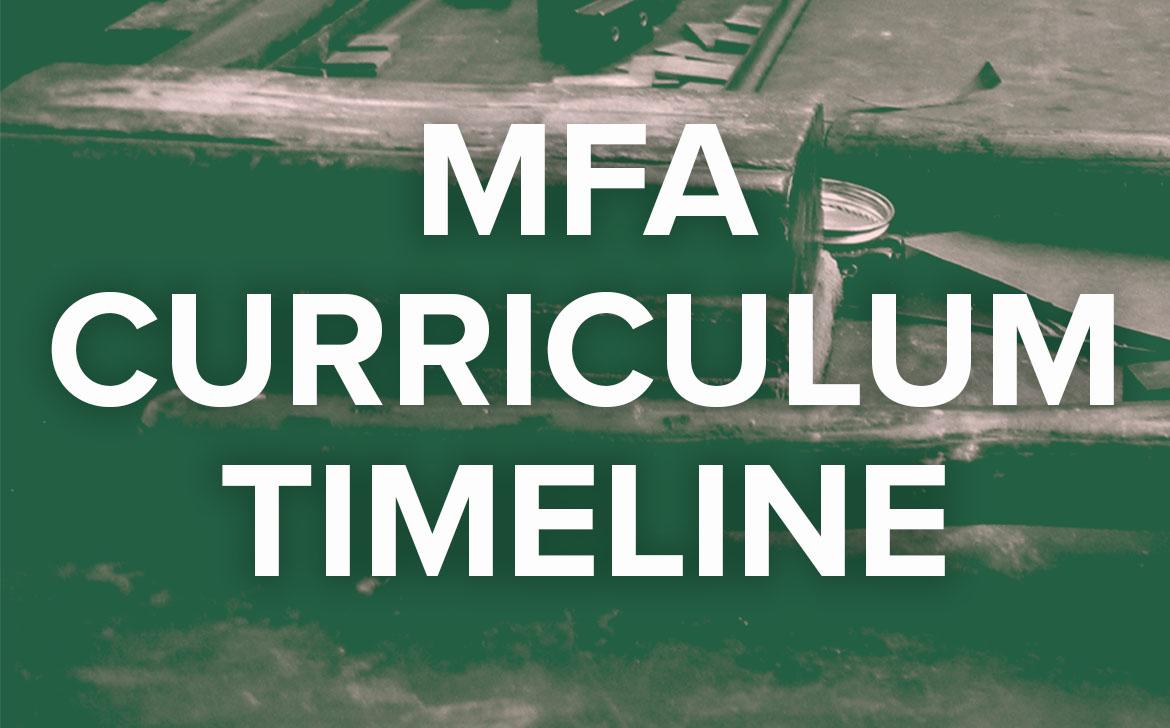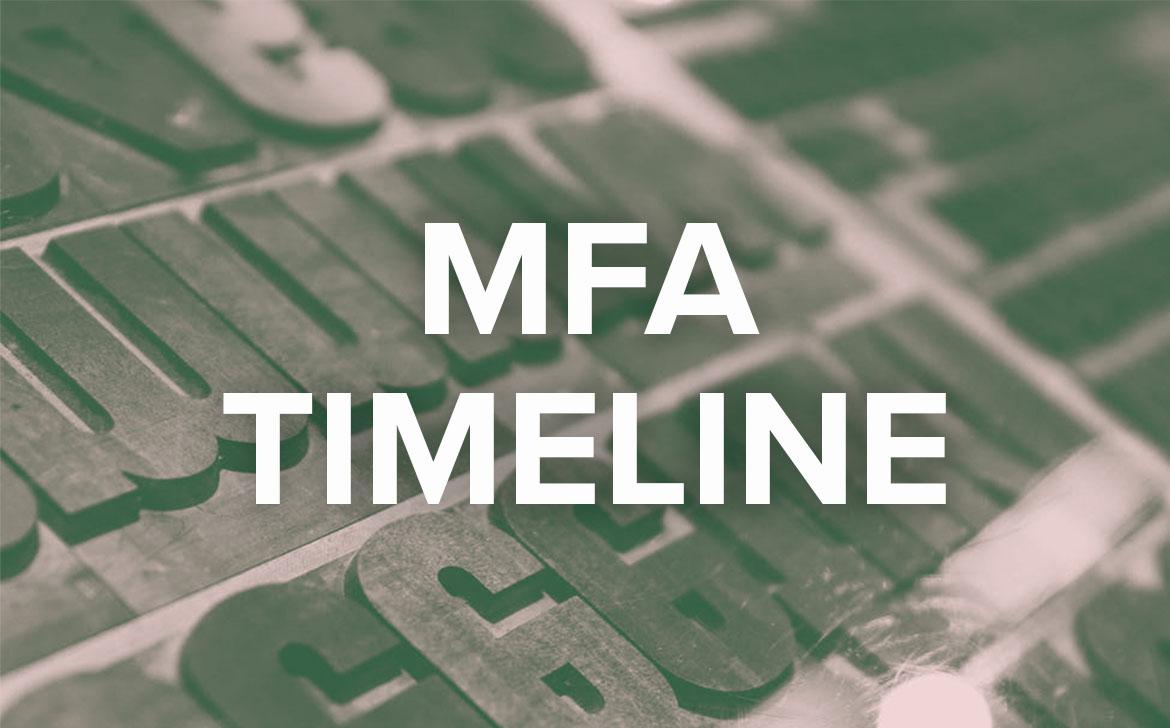
The first and second years of the MFA are devoted to studio research, seminars, art history, elective coursework, plus a professional experience in design. The third year is an intensive commitment to research in preparation for the thesis presentation that results in a comprehensive written document along with a complementary exhibition.
MFA Graphic Design Curriculum
Credit-Hour Requirement
The graduate program leading to the MFA degree in graphic design requires the completion of at least 90 semester hours of graduate study, including at least.
- 28 credits in studio courses within the major
- 12 credits of additional studio, these must not be drawn from the major
- 6 credits in seminars, (3-credit seminar in area + 3-credit School of Art teaching seminar)
- 12 credits of art history/academic studies (including AH 5101 and AH 5902 "theory” course)
- 7 credits of discretionary electives, (electives are selected in consultation with faculty, 4 credits written thesis is requested of all graphic design MFA students)
- 65 SUBTOTAL minimum course credit requirements
- 25 studio thesis
- 90 TOTAL: The specifics for these categories are outlined in the Graduate Guide for your entering semester.
Graphic Design Curriculum
Each course will research various design paradigms. Depending on the faculty, exploration can be done through a rebuilding of pragmatic processes or theoretical and critical analysis of design thinking.
Year 1
ART 5000 - Graduate Teaching Seminar: Assists graduate associates with practical and pedagogic support. Coursework investi- gates issues specific to teaching in the studio.
ART 5510 - Graphic Design I: Research of various design paradigms will be explored through a rebuilding of pragmatic processes to an end that assists all students to reach an industry standard of research, skills, and exploration process.
ART 5520 - Graphic Design II: Research of various design paradigms will be explored through a rebuilding of pragmatic processes to an end that assists all students to reach an industry standard of research, skills, and exploration process. Includes research to identify a site for the research to be conducted during ART 6510.
Year 2
ART 6500 - Graphic Design Seminar: Lectures, discussions, field trips, and media presentations dealing with contemporary issues of critical discourse in design and the related social dynamic. Seminar content will vary depending on the professor of record. Seminar content will vary.
ART 6510 - Graphic Design Research Fellowship: Participation in a design internship/assistantship with a recognized designer or design firm, or a study abroad experience related to the field of research chosen and approved by the student’s committee.
ART 6520 - Graphic Design III: Continued research of various design paradigms will be explored through the rebuilding of the pragmatic design processes. A comparative analysis process will prepare students for the thesis and third year of visual research. The design thesis proposal will be presented for approval.
Year 3
ART 6950 - Studio Art Written Thesis: Written studio art thesis. In addition to the MFA candidate’s final presentation format this course requires the thesis to be submitted in TAD (Thesis and Dissertation) format to the committee.
ART 7960 - MFA Studio Thesis: Content will vary as per the MFA candidate’s topic. Regardless of topic, the MFA in Graphic Design’s thesis is identified in the following way. The thesis consists of two components: Visual and Written. How the thesis is presented can be decided by the student depending on audience and intention in consultation with their committee. Whichever final format the research takes, it needs to be submitted in TAD (Thesis and Dissertation) format to the committee.
Design Electives
These courses are offered when scheduling allows.
ART 5530 - Letterpress and Bookmaking: An introduction to handprinting techniques utilizing the letterpress, with emphasis on the design and making of the handmade book.
ART 5540 - Typography and Image: Experimentation and integration of typography for form and meaning in a variety of contexts. Use of traditional and experimental methods and materials to support and strengthen meaning and purpose.

